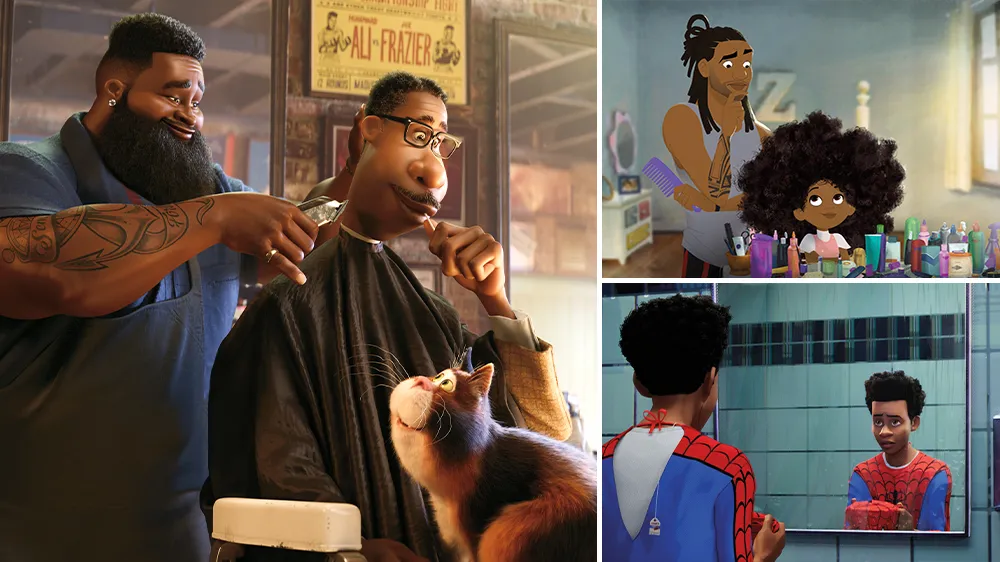
The landscape of children’s animation has undergone significant transformation in its portrayal of African American characters and stories over the decades. From problematic stereotypes to groundbreaking representations, the journey reflects broader societal evolutions in understanding the importance of authentic, diverse storytelling. Today’s kids animated shows increasingly feature multidimensional African American characters and narratives that celebrate cultural richness while addressing universal themes. This progression represents not merely a demographic shift but a fundamental reconceptualization of whose stories deserve telling and how they should be told.
Historical Context: The Evolution of Black Representation in Animation
From Stereotypes to Authentic Characters
Early animation frequently depicted Black characters through harmful caricatures rooted in minstrelsy traditions. These portrayals reinforced negative stereotypes through exaggerated physical features and problematic behavioral characteristics. The transition away from these representations began gradually in the mid-20th century, accelerating during the civil rights era and continuing to evolve today. Modern educational cartoons increasingly present African American characters with authenticity, depth, and cultural specificity that respects rather than caricatures their identities.
Milestone Moments in Animation History
Several watershed moments mark the evolution of Black representation in animation:
- The introduction of the first recurring Black characters in mainstream animation during the 1970s
- The emergence of Black-led animated programs in the late 1990s and early 2000s
- The creation of animation studios specifically dedicated to diverse storytelling
- The development of mainstream shows centered entirely around African American families and communities
- Award recognition for animations featuring authentic Black narratives and characters
These milestones reflect persistent efforts by creators, activists, and audiences to transform animation into a more inclusive medium.
The Importance of Representation in Children’s Media
Identity Formation and Self-Image
Research consistently demonstrates that media representations significantly impact children’s identity development and self-perception. For African American children, seeing positive, multidimensional characters who share their cultural background provides:
- Validation of their identities and experiences
- Models for positive self-concept development
- Reinforcement that their stories matter in the broader cultural narrative
- Inspiration for future possibilities and aspirations
- Counterbalances to negative stereotypes encountered elsewhere
These psychological benefits translate into measurable impacts on academic performance, social development, and emotional well-being.
Cross-Cultural Understanding and Empathy Development
Quality representation of African American characters and narratives benefits all children through:
- Exposure to diverse perspectives and experiences
- Development of cross-cultural empathy and understanding
- Normalization of diversity as a positive social reality
- Recognition of both universal human experiences and culturally specific realities
- Preparation for participation in diverse communities and workplaces
When children of all backgrounds encounter thoughtful representation in their media, they develop more inclusive worldviews that serve them throughout life.
Contemporary Excellence in African American Animation
Celebrated Shows and Their Impact
Recent years have witnessed remarkable growth in animations featuring authentic African American characters and experiences. Standout examples demonstrate various approaches to meaningful representation:
- Programs centering African American families navigating everyday life and extraordinary adventures
- Historical animations introducing children to significant figures and movements in Black history
- Fantasy and science fiction narratives featuring Black protagonists in imaginative settings
- Educational shows incorporating African American cultural traditions and perspectives
- Collaborative productions involving diverse creative teams bringing multiple perspectives
These varied approaches ensure children encounter African American representation across genres and storytelling modes.
Creative Voices Behind the Animation
The increase in authentic representation corresponds directly with growing diversity among creators, writers, directors, and producers. African American creative professionals bring:
- Lived experiences informing authentic character development
- Cultural knowledge ensuring accurate contextual details
- Nuanced understanding of community diversity and complexity
- Commitment to responsible storytelling that avoids stereotypes
- Innovative approaches to visual representation and narrative structure
The presence of these voices throughout the creative process transforms not only the content produced but the animation industry itself.
Cultural Authenticity in Storytelling
Beyond Tokenism: Depth and Complexity
Meaningful representation extends far beyond simply including visually Black characters. Quality animation featuring African American characters demonstrates:
- Cultural specificity in language, traditions, family dynamics, and community interactions
- Recognition of the diversity within Black communities rather than monolithic portrayal
- Characters defined by personality, interests, and growth rather than racial identity alone
- Thoughtful engagement with cultural experiences without reducing characters to cultural representatives
- Balance between universal themes and culturally specific elements
This depth and complexity create representations that resonate authentically with African American viewers while engaging broader audiences.
Balancing Cultural Specificity with Universal Themes
Successful animations navigate the delicate balance between cultural authenticity and universal accessibility through:
- Storytelling that grounds universal experiences in culturally specific contexts
- Character-driven narratives that emphasize shared human emotions and challenges
- Educational elements that explain cultural references without interrupting narrative flow
- Humor that works on multiple levels for different audience segments
- Thoughtful writing that invites rather than alienates viewers unfamiliar with specific cultural elements
This balanced approach creates content that simultaneously celebrates cultural specificity and builds cross-cultural connections.
Educational Value of Cultural Representation
Teaching History Through Animation
Animation provides powerful vehicles for introducing children to African American history through:
- Age-appropriate presentations of historical events and figures
- Narrative approaches making history accessible and engaging
- Visual representations helping children conceptualize different time periods
- Character-driven stories creating emotional connections to historical experiences
- Contextual frameworks helping children understand historical significance
These historical narratives fill educational gaps while inspiring interest in further learning about African American contributions and experiences.
Cultural Education Through Animated Content
Beyond history, animation offers opportunities for broader cultural education through:
- Introduction to art forms like jazz, hip-hop, and spirituals
- Exploration of culinary traditions and their historical significance
- Celebration of holidays and celebrations like Kwanzaa and Juneteenth
- Presentation of linguistic traditions including AAVE and storytelling practices
- Recognition of diverse spiritual and religious traditions
This cultural content enriches all children’s understanding while affirming African American children’s cultural heritage.
Industry Challenges and Progress
Representation Behind the Scenes
Authentic representation on screen correlates directly with diversity behind the scenes. The animation industry continues addressing disparities through:
- Mentorship programs developing African American animation talent
- Studio initiatives prioritizing diverse hiring practices
- Animation schools implementing inclusive recruitment strategies
- Industry organizations supporting networking among Black animation professionals
- Production companies founded specifically to create diverse content
These structural approaches create sustainable pathways for continued improvement in representation.
Commercial Considerations and Creative Control
Economic realities still influence representation in animation through:
- Marketing assumptions about target audiences and commercial viability
- International distribution considerations affecting content decisions
- Merchandising priorities influencing character development
- Budget allocations determining production quality and promotion
- Executive decision-making impacting which projects receive greenlight
Progressive studios increasingly recognize that authentic diversity represents not just ethical practice but sound business strategy in our multicultural society.
The Impact on Young Viewers
Measured Effects on Self-Perception and Aspirations
Research examining how African American children respond to seeing themselves represented in animation reveals:
- Improved self-esteem and positive identity development
- Increased interest in related academic subjects
- Enhanced creative expression and storytelling
- Greater comfort discussing racial identity and experiences
- Expanded vision of future possibilities and career aspirations
These measurable impacts demonstrate representation’s concrete value beyond abstract diversity ideals.
Parent and Educator Perspectives
Parents and educators report significant benefits when children encounter quality African American representation:
- More engaged viewing experiences with deeper discussion afterward
- Increased interest in reading related materials
- Improved vocabulary related to identity and culture
- Greater comfort discussing racial differences and similarities
- Enhanced pride in cultural heritage and community traditions
These observations from adults who work closely with children confirm animation’s potential as a tool for positive identity development.
Future Directions in African American Animation
Emerging Trends and Innovations
The future of African American representation in animation points toward:
- Expanded genre diversity beyond contemporary realism
- Interactive elements allowing viewer input into narrative development
- Virtual reality experiences centered around African American narratives
- Cross-platform storytelling extending animated worlds across media
- International collaborations bringing global Black diasporic perspectives
These innovations promise to further expand representation while creating new storytelling possibilities.
The Role of Streaming Platforms and Independent Creation
The changing media landscape creates new opportunities through:
- Streaming services commissioning diverse content for global audiences
- Independent creators finding distribution for specialized content
- Social media platforms showcasing experimental animation
- Crowdfunding enabling community-supported productions
- Digital tools democratizing animation production processes
These developments create space for voices and perspectives previously excluded from traditional animation channels.
Conclusion
The evolution of African American representation in animation reflects a broader societal journey toward recognizing the importance of authentic, diverse storytelling. From problematic beginnings to today’s increasingly nuanced portrayals, this progression represents significant cultural growth. Quality animated content featuring African American characters and narratives serves multiple valuable functions—affirming Black children’s identities, educating all children about cultural diversity, challenging stereotypes, and enriching the animation landscape with varied perspectives and experiences.
As creators, studios, and platforms continue prioritizing authentic representation, animation will increasingly reflect the full spectrum of human experience. This progression serves not merely demographic inclusion goals but fundamental human needs for recognition, understanding, and connection across differences. Through thoughtfully created animation, children develop both stronger sense of self and deeper appreciation for others—essential foundations for navigating our diverse world with confidence and compassion.



